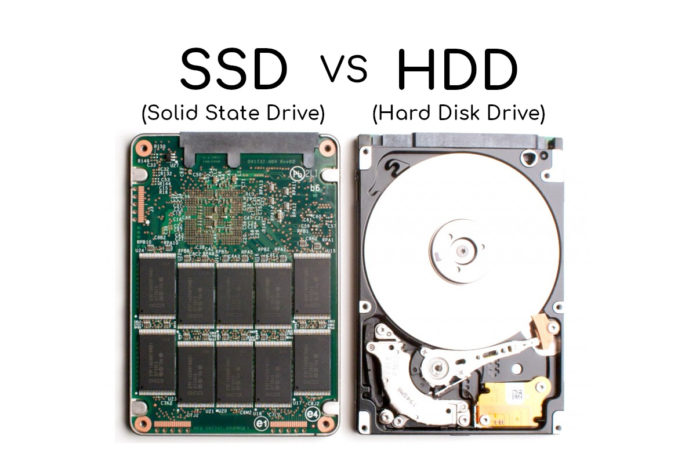With regards to SSD versus HDD speed correlations, SSDs obviously has the favorable position. Be that as it may, truly the greater expense per Gigabyte of SSD stockpiling implied that the advantages of higher SSD speeds were confined to a couple of uses where the expense could be supported.
Today, however, the value differential has limited essentially. What’s more, with the fundamentally higher SSD speeds as opposed to HDD, the prominence of SSD stockpiling, regularly known as “flash” is detonating. Organizations are presently centered around getting the best flash array.
Speed and Performance
Solid state drives (SSDs) are quicker than regular hard disk drives (HDDs) and they are likewise increasingly dependable and use less power. That implies that with regards to picking between SSD or HDD stockpiling, SSDs would be ideally to HDDs in all cases if not for one reality: SSDs are more costly than HDDs when estimated by cost per Gigabyte of capacity.
Read and Write Speed
How much quicker is an SSD? The appropriate response obviously relies upon which SSD and HDD you analyze and what precisely you are looking at. An SSD speed correlation will uncover that there is a wide variety between SSD speeds.
In any case, to get a thought of the exhibition distinction an SSD v HDD speed examination could sensibly appear, a standard SSD can peruse successive information at a speed of around 550 megabytes for each second (MBps) and compose it at 520 MBps. Interestingly, a quick HDD may do consecutive peruses and composes at simply 125MBps.
That shows that the contrast among SSD and HDD execution is huge. The response to the topic of how much quicker an SSD is contrasted with a HDD? Around multiple times quicker with regards to SSD versus HDD read speed, and somewhat less when SSD versus HDD compose speed is looked at.
SSD Speed
Verifiably, SSDs have been intended to be drop-in substitutions for HDDs, and that implies that they are regularly made with indistinguishable interfaces from HDDs, which by and by implies a SATA interface, or on progressively elite frameworks, a SAS interface.
These interfaces have been enhanced explicitly for HDD stockpiling gadgets, however they are imperfect for SSDs. “Interfaces do disrupt everything for SSDs,” says Jim Handy, an expert at Objective Analysis, “and that is the reason we are seeing PCIe SSDs.”
The impact of size on speed: SSD Interfaces
To get a thought of the advantage of a more SSD-accommodating interface like PCIe, think about this. The SATA 3.0 particular just permits SSDs to arrive at a most extreme information pace of about 560MB/s. By differentiate the PCIe 3.0 interface permits paces of 985MB/s per path. (The SSD’s controller is associated by various paths to various NAND chips where the information is really put away.) Even however an individual NAND chip is probably not going to have the option to work at a 985MB/s, a gadget with 8 chips on isolated paths can without much of a stretch offer 3000 MB/s total throughput.
Step by step instructions to make SSDs quicker
Another way that SSD speed can be expanded is to utilize quicker NAND. Standard NAND utilized in SSDs is successfully level, and execution sapping blunder remedy calculations are utilized to alleviate against information defilement brought about by cell to cell impedance in firmly stuffed cells. Be that as it may, new glimmer chip innovation utilizes different layers of memory cells (known as 3D NAND) and this offers the potential for quicker SSD peruse and compose execution. That is on the grounds that it’s not important to run these calculations in 3D NAND, and chip-producer Samsung says its 3D NAND is twice as quick as ordinary planar NAND with regards to SSD compose speed.
The contrast among SSD and HDD read velocities can be upgraded further by moving ceaselessly from NAND out and out, and rather utilizing SSDs which are furnished with another capacity medium called 3D XPoint, mutually created by Intel and Micron.
HDD Speed
The best approach to diminish dormancy is generally straightforward: expanding the revolution pace of the platters will decrease inertness, and therefore superior HDDs turn at 15,000 rpm as opposed to the more standard 7,200 rpm.
Turning the platters quicker than 15,000 would bring about further decreases in inertness, however for useful reasons this is hard to accomplish: the quicker the platters turn the less steady they are. Quicker turning circles additionally devour unmistakably more power. Both of these issues have been tended to some degree by filling HDDs with helium, however for the minute 15,000 rpm has all the earmarks of being the cutoff.
Short Stroking
Decreasing look for times to expand HDD execution is conceivable, and this is regularly accomplished utilizing a stunt called “short stroking”. This includes utilizing just a segment of a HDD’s ability, for instance by just utilizing the peripheral 10% of every platter. By doing this, the read/compose head just needs to cover a separation one tenth to the extent if the entire platter was being used, and overall it will be far nearer to where it needs to move to for each peruse or compose activity.
The drawback to short stroking is that despite the fact that there will be a critical increment in hard drive speed, it is very wasteful on the grounds that lone a little segment of the HDD stockpiling limit can be used despite the fact that the power utilization stays unaltered.
You may also check best gaming laptop under 1500.








